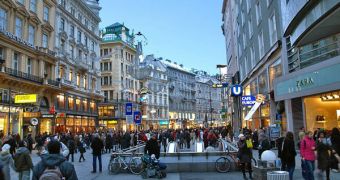New research suggests the fact that, although people tend to be attracted by crowds in shopping centers and come in themselves to look around, they are not very likely to buy things that they haven't planned for. In addition, individuals have proven to be less likely to purchase items from very crowded locations, preferring shops in which they have room to look around and also a sufficient amount of time to decide. The study has been based on consumer data supplied by an important chain of stores in the eastern United States.
The authors of the new scientific study, which appears in the latest issue of the Journal of Consumer Research, have been New York University (NYU) expert Sam K. Hui, and University of Pennsylvania investigators Eric T. Bradlow and Peter S. Fade. They have analyzed the behavior of clients in a major superstore by using a system known as Pathtracker®, a device that is attached to the bottom of shopping carts, and which then matches receipts with a specific cart. The system transmits the location of the shopper every 5 seconds, so the researchers have had plenty of data to work with.
“As consumers spend more time in the store, they begin to feel time pressure when making the visit. Thus they adapt by changing their shopping strategies: They are less likely to spend time on exploration, and instead focus on visiting and shopping at store zones that carry categories they plan to buy,” the authors write in their study. They say that, the more time people spend in shops, the more likely they are to become purposeful, as in not spending any more time looking for things they will never buy.
The study has also confirmed previous shopping theories, which held that people were very likely to buy a product from a “vice” line, such as a soda, or unhealthy snacks, after purchasing one from a “virtue” line, such as organic food and other such items. “This offers new insights about actual shopping behavior,” the authors explain. The main goal of the new paper has been to offer retailers a tool to better arrange their merchandise, so as to maximize profits.
“Using our integrated model of consumer behavior, retailers can experiment with different store layouts and product placement schemes by simulating consumers' paths and purchases,” the three conclude.

 14 DAY TRIAL //
14 DAY TRIAL //